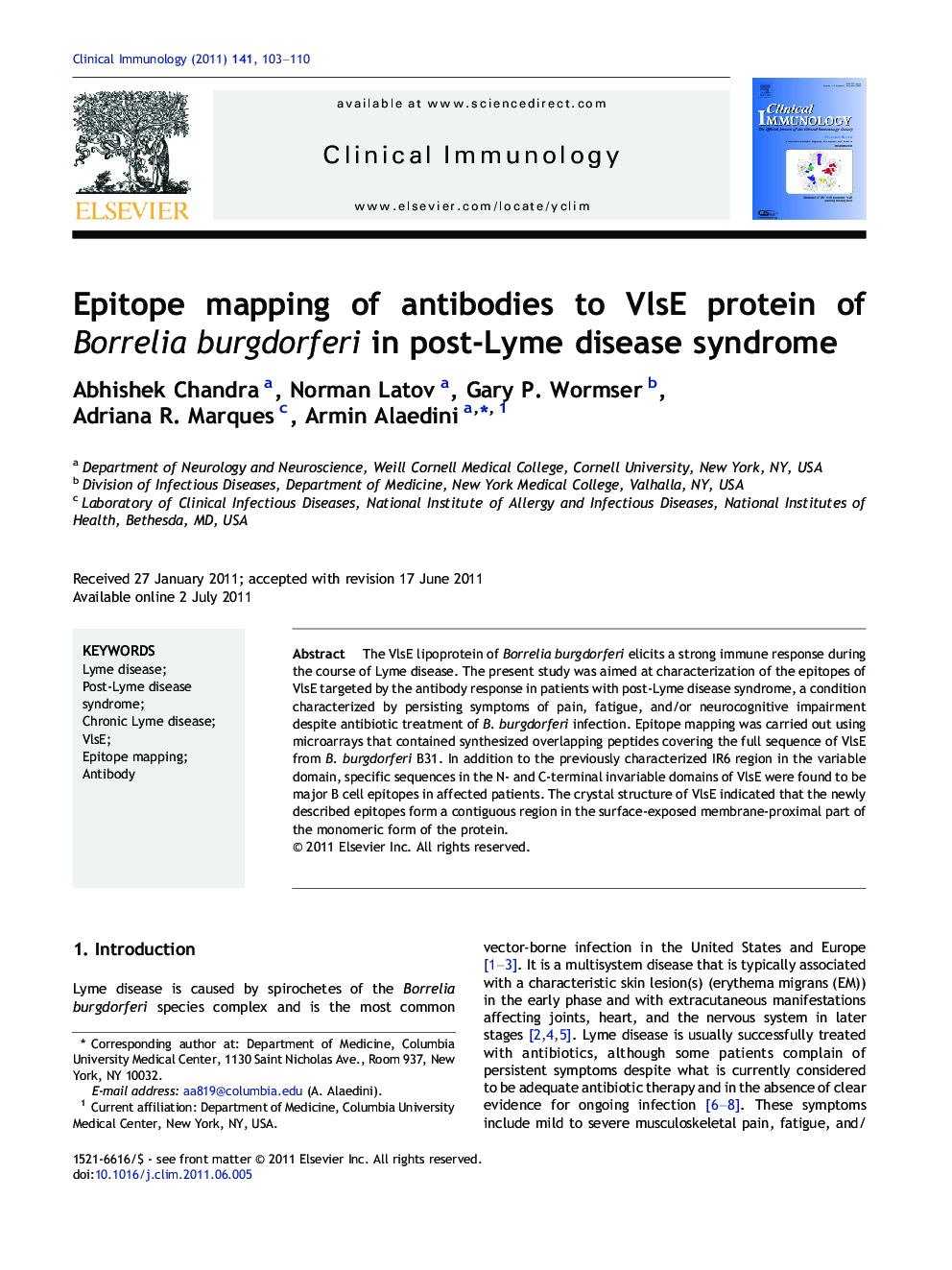| Article ID | Journal | Published Year | Pages | File Type |
|---|---|---|---|---|
| 6087795 | Clinical Immunology | 2011 | 8 Pages |
The VlsE lipoprotein of Borrelia burgdorferi elicits a strong immune response during the course of Lyme disease. The present study was aimed at characterization of the epitopes of VlsE targeted by the antibody response in patients with post-Lyme disease syndrome, a condition characterized by persisting symptoms of pain, fatigue, and/or neurocognitive impairment despite antibiotic treatment of B. burgdorferi infection. Epitope mapping was carried out using microarrays that contained synthesized overlapping peptides covering the full sequence of VlsE from B. burgdorferi B31. In addition to the previously characterized IR6 region in the variable domain, specific sequences in the N- and C-terminal invariable domains of VlsE were found to be major B cell epitopes in affected patients. The crystal structure of VlsE indicated that the newly described epitopes form a contiguous region in the surface-exposed membrane-proximal part of the monomeric form of the protein.
Graphical abstractDownload high-res image (261KB)Download full-size imageHighlights⺠We epitope-mapped the antibody response to VlsE in PLDS patients and controls. ⺠Patients exhibited antibody reactivity to membrane-proximal region of the protein. ⺠The newly described VlsE epitopes in PLDS offer novel clues about the condition.
